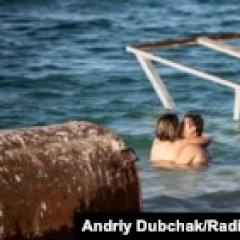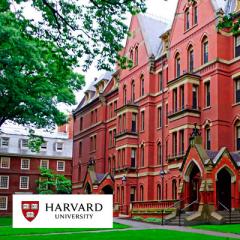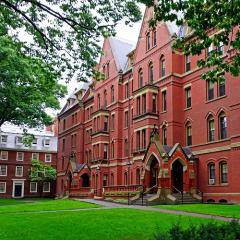Lake baikal topic. Topic in English "Baikal"
The presentation can be used when studying topics: Ecology, Environment, Russia, etc. Lake Baikal is the pearl of Russia, the presented presentation can be easily entered into any part of the lesson and, depending on the creativity of the teacher and the level of students, on its basis, develop a set of grammatical and lexical exercises
Download:
Preview:
To use the preview of presentations, create yourself a Google account (account) and log into it: https://accounts.google.com
Slide captions:
Lake baikal
Lake Baikal is the world’S oldest and deepest lake in the world. It contains 20% of all fresh running water on the planet, making it the single largest reservoir.
Lake Baikal is 30 million years old. Its average depth is 744.4metres. It is the second most voluminous lake after the Caspian Sea.
Located in the south of the Russian region of Siberia, between Irkutsk region to the northwest and the Buryat Republic to the southeast.
Lake Baikal was formed as an ancient rift valley, having the typical long crescent shape with a surface area of 31,722 sq km
Baikal is home to more than 1700 species of plants and animals, two third of which can be found nowhere else in the world and was declared a UNESCO World Heritage Site in 1996.
Lake Baikal was known as the “North Sea” in historical Chinese text. It was situated in the then Xiongnu territory. Very little was known to Europeans about the lake until the Russian expansion into the area in the 17 th century. The first Russian explorer to reach Lake Baikal was Kurbat Ivanov in 1643
Baikal is one of the most biodiesel lakes on Earth, with 1340 species of animal and 570 species of plant.
The landscape surrounding the lake, with its mountains, forests, tundra, lakes, islands and steppes is exceptionally picturesque.
The lake is completely surrounded by mountains. The Baikal Mountains on the north shore and the taiga are protected as a national park. It contains 27 islands; the largest, Olkhon, is 72 km long and the third-largest lake-bound island in the world.
The lake is fed by as many as three hundred and thirty inflowing rivers. The main ones are the Selenga River, the Barguzin River, The Upper River, the Turka River, The Sarma River and the Snezhnaya River. It is drained through a single river, the Angara River. It is named the daughter of Baikal. Do you know the legend about Angara?
Baikal, a lake in the southern part of Eastern Siberia, in the Buryat Autonomous Soviet Socialist Republic and the Irkutsk Region of the RSFSR. The area is 31.5 thousand km2. The length is 636 km, the average width is 48 km, the greatest is 79.4 km. The catchment basin of Byelorussia occupies about 557 thousand km2. Volume of water mass 23 ... ... Great Soviet Encyclopedia
Lake Baikal (addition to the article)- In connection with the construction of the Siberian railway, B.'s research was undertaken. For this purpose, Colonel FK Drizhenko was sent on a mission in 1896 for preliminary surveys, then in 1897, under his command, a special one began to work on B. ... Encyclopedic Dictionary of F.A. Brockhaus and I.A. Efron
Baikal (lake in Siberia)- ... Wikipedia
Baikal- lake in the South East. Siberia; Buryatia and Irkutsk region. Russian people mastered the coast of the lake in the 40s. XVII century. From the Evenks they learned the name of the lake. Lamu sea. From them they also learned the Buryats, the name Baigal, borrowed from the Yakuts. Baykhal or ... Geographical encyclopedia
Baikal- Lake Baikal. Baikal, a lake in the south of Eastern Siberia, Buryatia and Irkutsk region. The area is 31.5 thousand km2, the length is 636 km, the average width is 48 km. The volume of water is 23 thousand km3 - about 1/5 of the world's fresh water reserves (excluding glaciers). Level B. ... ... Dictionary "Geography of Russia"
Baikal- This term has other meanings, see Baikal (meanings). Baikal drill. Baigal Dalai Coordinates: Coordinates ... Wikipedia
Baikal (disambiguation)- Baikal: Lake Baikal in the south of Eastern Siberia. Contents 1 Toponyms 1.1 Bulgaria 1.2 Russia ... Wikipedia
Lake Baikal- Baikal Shaman rock on Olkhon island Coordinates: Coordinates ... Wikipedia
Baikal- a lake in Shimanovsky district, in the floodplain of the river. Amur. The name is from the largest deep-water lake in the world, Baikal. The name is derived from the Yakut. buy rich, kel (kel) lake, that is, a rich lake. This explanation captivates with its closeness to ... ... Toponymic dictionary of the Amur region
Books
- Baikal Land of the Sun and Legends, Suprunenko Yu. Category: General works on the history of Russia Buy for 347 rubles
- Baikal is the land of the sun and legends. Historical guide, Suprunenko Yu.P. , Baikal is one of the most famous symbols of Russia! As well as a vast region, including the Baikal region with the Irkutsk region and the Transbaikal region with the Republic of Buryatia. Lake Baikal amazes ... Category: Russia Series: Historical Guide Publisher:
In the midst of a thinly populated wildness there is the foremost natural wonder - Lake Baikal. It is the oldest lake in the world - its age is about 25-30 million years. Scientists estimated that more than 1500 life forms live in and around this lake. They can be found nowhere else on Earth. It occupies the territory of 12000 m2 and 400 km long. About 30 uninhabited isles are scattered throughout the lake. It’s the largest reservoir of drinking water. It contains 1/6 of fresh water found on the planet and in spite of the vast pollution by the nearby industry the most of it still remains clean and clear.
Most of the coastline lies in an environmentally protected area. The most numerous of the indigenous people are Buryats. They have been living here for many centuries. A feeling of tranquility settles over the coastal villages during long summer afternoons. A vehicle driving along the village’s streets is a rare sight. A motorcycle with a sidecar is the most popular civil transport; and a passenger car still remains an object of curiosity for children.
The area’s largest city is Ulan-Ude which was first established by the Russians as an outpost for tsar’s tax collectors during Russia’s Eastward expansion in the XVI and XVII centuries. It lies in the border area between the Siberian forests and the grassy steppes. It's an average Siberian town without much distinction, except for a strange fancy relict in the main square. The world’s biggest head of Vladimir Lenin has more than 25 feet tall and it is ironically said by rumor that it was inspired by the head of Buddha that was located in Ulan-Ude before the Soviet takeover. And now although most of Soviet monuments have been dismantled this one is going to stay because the locals became quite fond of it.
Among the sparsely populated area there is a natural miracle - Lake Baikal. This is the oldest lake in the world - its age is about 25-30 million years. Scientists estimate that more than 1,500 life forms live near and in this lake. Apart from Lake Baikal, they cannot be found anywhere on Earth. The lake covers an area of 12,000 m2 and is 400 km long. About 30 uninhabited islands are scattered throughout the lake. This is the largest drinking water reservoir. It contains 1/6 of the fresh water found on the planet, and despite the overwhelming pollution of the nearby industry, most of the water still remains clean and transparent.
Most of the coastline is located in an ecologically protected area. The most numerous of the indigenous peoples are the Buryats. They have lived here for centuries. A sense of calmness emanates from the coastal villages during the long summer days. A vehicle driving through the streets of the village is a rare sight. Sidecar motorcycle is the most popular form of civil transport; and the car is still a subject of curiosity for children.
The largest city in the region is Ulan-Ude, which was founded by the Russians as an outpost for tsarist tax collectors during the Russian expansion to the east in the 16th and XVII centuries... It is located in the area of the border between Siberian forests and grassy steppes. This is an average Siberian city without much difference, except for a strange relic in the main square. This is the largest head of V.I. Lenin, which is more than 25 feet in height. Rumor has it that it was inspired by the head of the Buddha, which was located in Ulan-Ude before the establishment of Soviet power. And now, although most of the Soviet monuments have been dismantled, no one is going to demolish it, because the locals love it very much.
In the midst of a thinly populated wildness there is the foremost natural wonder - Lake Baikal. It is the oldest lake in the world - its age is about 25-30 million years. Scientists estimated that more than 1500 life forms live in and around this lake. They can be found nowhere else on Earth. It occupies the territory of 12000 m2 and 400 km long. About 30 uninhabited isles are scattered throughout the lake. It’s the largest reservoir of drinking water. It contains 1/6 of fresh water found on the planet and in spite of the vast pollution by the nearby industry the most of it still remains clean and clear.
Most of the coastline lies in an environmentally protected area. The most numerous of the indigenous people are Buryats. They have been living here for many centuries. A feeling of tranquility settles over the coastal villages during long summer afternoons. A vehicle driving along the village’s streets is a rare sight. A motorcycle with a sidecar is the most popular civil transport; and a passenger car still remains an object of curiosity for children.
The area’s largest city is Ulan-Ude which was first established by the Russians as an outpost for tsar’s tax collectors during Russia’s Eastward expansion in the XVI and XVII centuries. It lies in the border area between the Siberian forests and the grassy steppes. It's an average Siberian town without much distinction, except for a strange fancy relict in the main square. The world’s biggest head of Vladimir Lenin has more than 25 feet tall and it is ironically said by rumor that it was inspired by the head of Buddha that was located in Ulan-Ude before the Soviet takeover. And now although most of Soviet monuments have been dismantled this one is going to stay because the locals became quite fond of it.
Baikal
Among the sparsely populated area there is a natural miracle - Lake Baikal. This is the oldest lake in the world - its age is about 25-30 million years. Scientists estimate that more than 1,500 life forms live near and in this lake. Apart from Lake Baikal, they cannot be found anywhere on Earth. The lake covers an area of 12,000 m2 and is 400 km long. About 30 uninhabited islands are scattered throughout the lake. This is the largest drinking water reservoir. It contains 1/6 of the fresh water found on the planet, and despite the overwhelming pollution of the nearby industry, most of the water still remains clean and transparent.
Most of the coastline is in an ecologically protected area. The most numerous of the indigenous peoples are the Buryats. They have lived here for centuries. A sense of calmness emanates from the coastal villages during the long summer days. A vehicle driving through the streets of the village is a rare sight. Sidecar motorcycle is the most popular form of civil transport; and the car is still a subject of curiosity for children.
The largest city in the region is Ulan-Ude, which was founded by the Russians as an outpost for tsarist tax collectors during the Russian expansion to the east in the 16th and 17th centuries. It is located in the area of the border between Siberian forests and grassy steppes. This is an average Siberian city without much difference, except for a strange relic in the main square. This is the largest head of V.I. Lenin, which is more than 25 feet in height. Rumor has it that it was inspired by the head of the Buddha, which was located in Ulan-Ude before the establishment of Soviet power. And now, although most of the Soviet monuments have been dismantled, no one is going to demolish it, because the locals love it very much.
Slide No. 1
Slide Description:
Unique Baikal By Shipovskoy Roman The Center of Children "s Creation" Sviblovo ", Moscow.
Slide No. 2

Slide Description:
About Baikal Lake Lake Baikal is the world "s oldest and deepest lake. The amazing purity of its waters, huge territory and deep make it the most famous and exiting lake in the world. It lies in southern Siberia, almost in the center of Asia . Its watershed extends over the Mongolian border for 636 km. Its area is about 31,500 square kilometers and equal to the area of such countries as Belgium, Switzerland, Netherlands or Denmark. The coastline of Baikal is almost 2000 km long, which is equal to the distance from Arkhangelsk to Rostov. Lake Baikal contains one-fifth of the world "s surface water resources, and four-fifth of fresh waters of Russia. Its basin could hold waters of all five American Great Lakes, which are 8 times bigger.
Slide No. 3

Slide Description:
The Baikal is surrounded by mountain chains which are covered with taiga lifting turned to bushes and mountain tundra. The southern hills are generally unforested.
Slide Description:
There is a lot of sun on Lake Baikal. The number of sunny days at its costs exceeds the most of resorts on the Black Sea and some on the Mediterranean, for example Nice. In summer the temperature of the water doesn`t outreach the 15 degrees. Below 250 meters the temperature is stable and is about 3.5 degrees for the whole year. In January the Lake is fettered by the thick ice. But because of unusual purity you can look through the ice for more than 12 meters deep. The lake is indeed old: clay samples taken in 1990 show that Lake Baikal is at least 30 million years old, that makes it the world "s oldest known lake. The second old Lake Tanganyika in Africa is at least 500 thousand years younger. In earlier days the territory of the Baikal was a number of shallow lakes inhabited by heat-loving animals and plants. The coasts were covered by subtropical vegetation. The modern shape was formed about 1 million years ago. The process of basin formation is still going on, and sometimes there are earthquakes there.
Slide No. 5

Slide No. 6

Slide Description:
Slide No. 7

Slide Description:
Flora and Fauna The Baikal is also one of the most interesting biotopes in the world. As it is quite an isolated lake, the nature there could develop balanced and varied. The animal world of the lake forms a remarkably complementary and harmonies system. The flora and fauna of the lake are mostly endemic. It is inhabited by over 58 fish species. The most well-known species are: the omul, Siberian whitefish, the grayling, the taimen, the sturgeon, the Baikal oil fish, and goldilocks. More than 2000 plants grow on the lake coasts. Lake Baikal forms an ideal habitat for typical sea mammal –the nerpa (the Baikal seal). Still not all organisms inhabited Baikal are explored. Scientists continue to discover more and more unknown species.
Slide No. 8

Slide Description:
Slide No. 9

Slide Description:
Slide No. 10

Slide Description:
Slide No. 11

Slide Description:
Slide No. 12

Slide Description:
Slide No. 13

Slide Description:
Baikal's Exploration Preservation of the lake, however, has recently come to international attention. The Baikal's scientific exploration history is over 300 years, while the harmful impact on its ecosystem numbers merely 50 years. Industrial and civil buildings have grown and spread, the population has enlarged and new towns and settlements have arisen, new lands have been ploughed up and more chemicals have been used in agriculture.
Slide No. 14

Slide Description:
Slide No. 15

Slide Description:
Slide Description:
Plants and mills Nowadays there are more than 60 plants and mills along the Baikal's cost. The biggest are Baikalsk's and Selenginsk's forest transshipment bases and Paper-and-Pulp Mills at Baikalsk and Selenginsk. More than 50 per cent of the world "s purest water has been ruined. The whole ecological system of the lake has changed greatly. The mills has polluted the surrounding region and threatened the pristine conditions that have existed for centuries.
Slide No. 17

Slide Description:
Slide No. 18

Slide Description:
Slide No. 19



